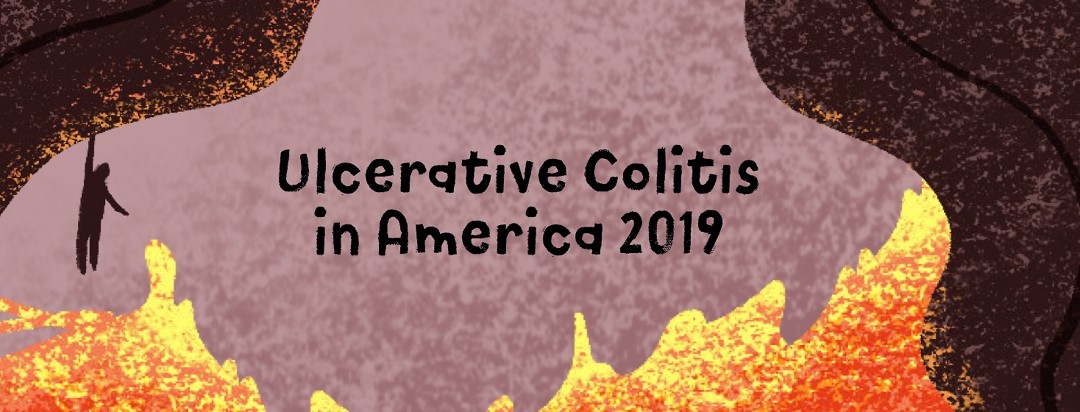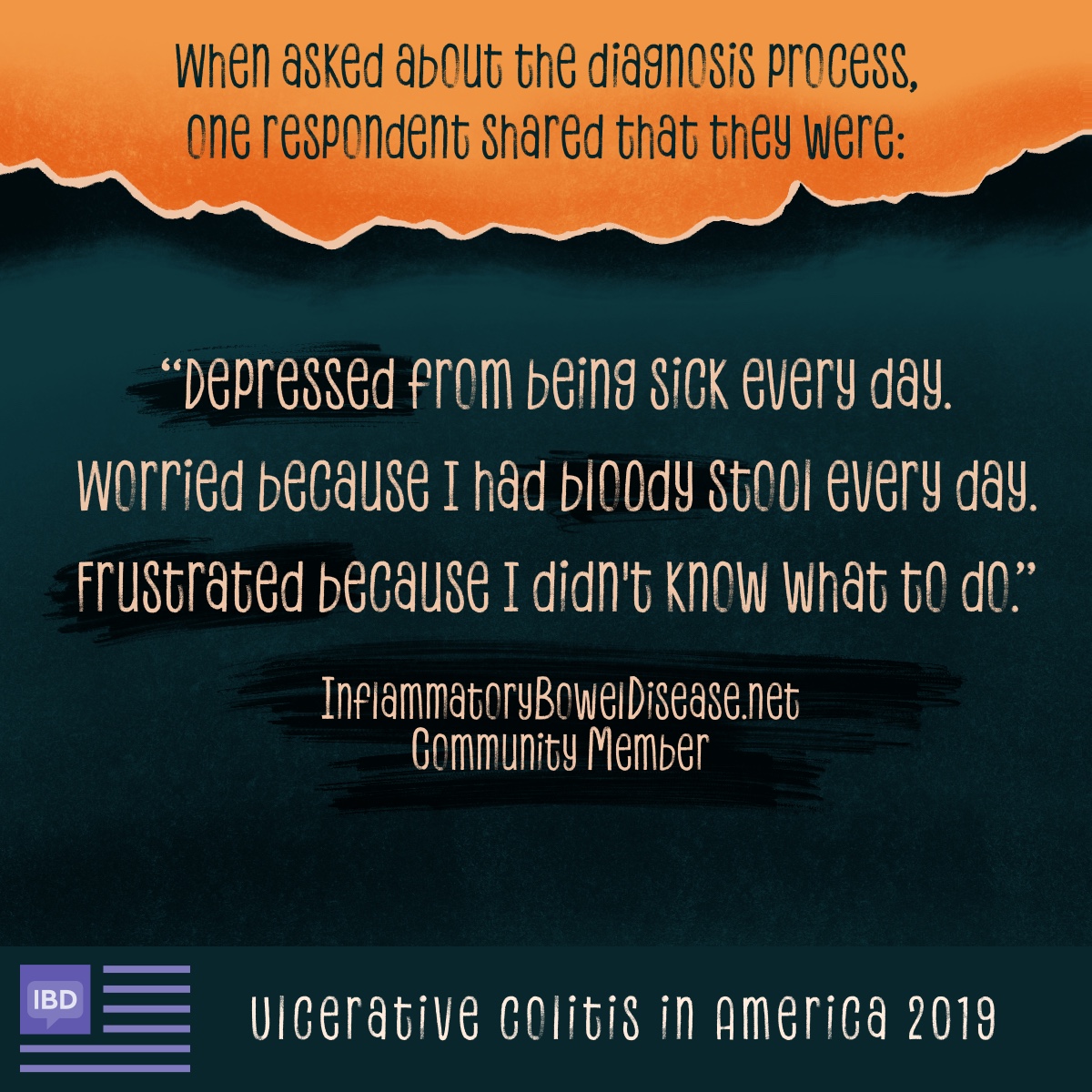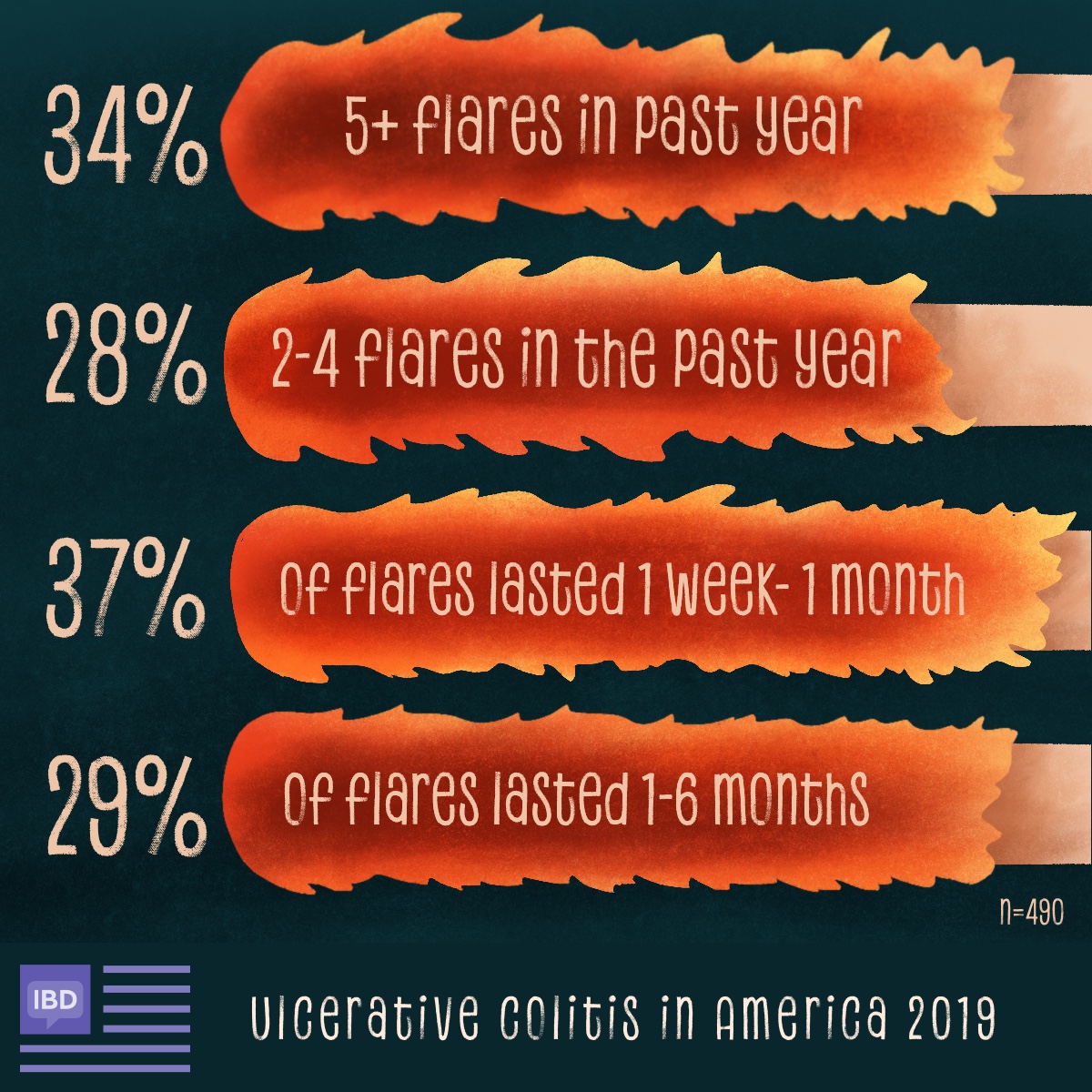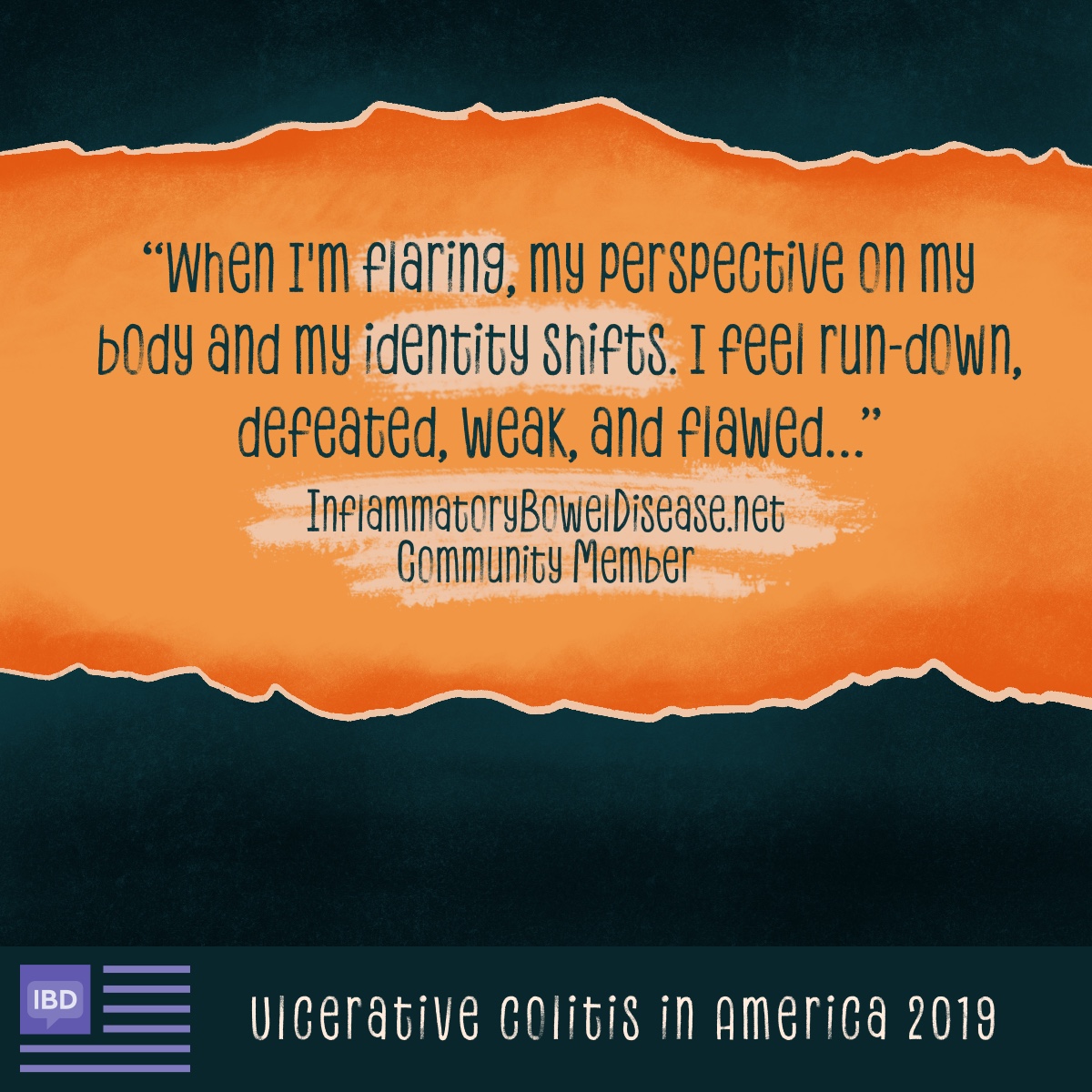Ulcerative Colitis Diagnosis, Symptoms, and Flares
Close to 500 patients recently shared more about life with ulcerative colitis in our 2019 IBD In America survey. Respondents opened up about the diagnosis process, daily symptoms, experience with flares, treatment experience, and so much more.
Diagnosis of ulcerative colitis
For those with ulcerative colitis who took the survey, the diagnosis process varied. A little over half (53%) were initially diagnosed with ulcerative colitis, whereas 40% were initially misdiagnosed and 6% did not recall.
Thoughts about diagnosis ranged from being frustrated, depressed, overwhelmed, scared, and confused to feeling a sense of relief for answers.
Ulcerative colitis symptoms and frequency
Symptoms of ulcerative colitis occur frequently. 45% of respondents shared that they had experienced symptoms for more than 15 days in the previous month. Of the symptoms experienced, the urgent need to move bowels was reported as the symptom that is most difficult to manage.
Dealing with ulcerative colitis flares
Flare-ups cause pain, limitations, and so much more for patients with ulcerative colitis. Respondents shared that flares are common for them and that they last for long periods of time. Strategies to cope with flares include avoiding certain foods that are loved, eating smaller meals, taking vitamins or probiotics, binging a favorite TV show, and venting to friends.
Ulcerative colitis flare-ups are both physically and mentally exhausting. When asked about flares, a respondent shared that they feel weak, defeated, and run-down. It is all-consuming.
The IBD in America 2019 survey was conducted online from February through June of 2019. Of the 1,705 people who completed the survey, 490 were diagnosed with ulcerative colitis, 1,000 were diagnosed with Crohn’s disease or Crohn’s colitis, and 215 were diagnosed with other types of IBD (Indeterminate colitis, microscopic, lymphocytic, or collagenous colitis).






Join the conversation